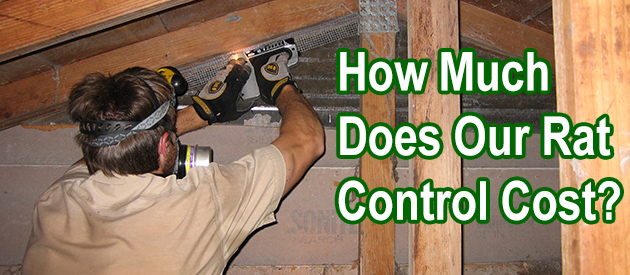Wyandotte County, Kansas City Rat Control Situation:
I pray that you receive my email. My house in Kansas City was infested with roof rats this year while my Daughter and four year old grandson were living in the house. I was living in the back guest room. They were continuously ill with flu symptoms and moved out. We had hired Tru Pest Control to help with the rats with no avail. Finally after they moved out the rats disappeared. However as my husband and I removed some built in cabinets in the family room, we uncovered two rat holes, nests, lots of feces. We disposed of the cabinets and haven't done anything else since. We are still living in the guest room in the back of the house. We do not have any rats. The house was built in 1940. The main house which was infested with rats has original wood floors and the entire front house has a crawl space. The guest room was originally a garage so it sits on the ground and has a cement floor. I am 58 yrs old, my husband is 59 yrs old and has been disabled since 1992. He has had his aortic and mitral heart valves replaced with mechanical valves and has a pacemaker. The BIG question is, will the house ever be safe for us to live in again? The decontamination sounds brutal and I am very sensitive to chemicals. We will never own the home free and clear in our lifetime. Should we even attempt to fix it up to live in or move??
Kansas City Rat Control Tip of The Week
Do Rats Enjoy Cold Locations?
For human beings, winter means dealing with a drop in temperature, but for animals like rodents, it might mean a whole change in their metabolisms and lifestyle. Rodents prefer warm places with easy access to food. Weather change for them might be deadly, so the best way for them to survive cold locations is to find an ideal refuge.
Burrows In Your House
During summer we can find burrows anywhere in the woods or other outdoor land, but with the arrival of rain, many of these shelters are torn apart. Rodents must leave in the pursuit of a new home with food, a warm environment, and away from the wetness of the outdoors.
Rats are innate explorers and are able to enter any living area because they have a very flexible bone structure able to pass through a crack. They also have claws to climb any surface. Their appearance in homes is more common with the start of cold, snow, rain, or even cloudy days.
Just One Rat Can Cause Immense Damage
Rodents love to gnaw. It is known that their teeth never stop growing and if they stop chewing, they can die. On the other hand, it is also known that due to their capacity of chewing hard things it can open up an opportunity to get their treasure: food. Food is enough motivation to keep biting anything.
When there are rats and mice appearing all over homes, there is plenty of damage that might be hard to fix. Economic losses can be alarming and because of this, it is necessary to take preventive measures such as eliminating areas that facilitate a shelter for rodents in your home during cold and humid seasons.
If you do not only want to prevent but also exterminate, you have a great advantage during winter since rodents' reproductive capacities slow down by not having adequate conditions for pups to survive. So, if you exterminate a population, chances of regeneration are minimum.


